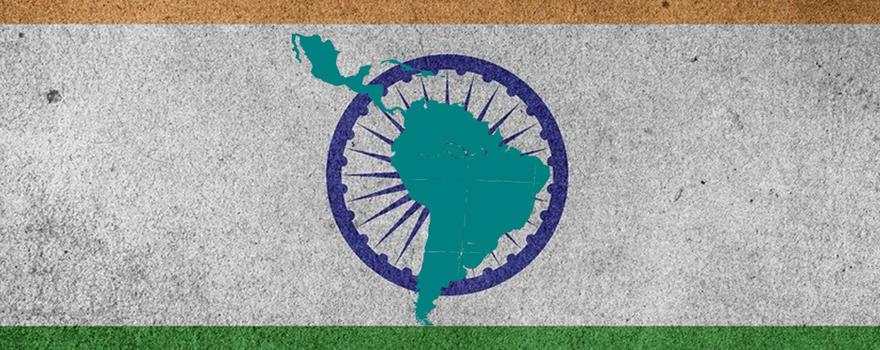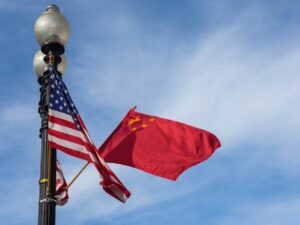
India’s exports to Latin American countries are greater than to neighboring countries and traditional trading partners.
In this sense, Indian exports of $266 million in 2023-24 to remote Honduras in Central America are more than exports of $185 million to nearby Cambodia and $237 million to Kazakhstan. Honduras’ population is only 10 million, compared to Cambodia’s 17 million and Kazakhstan’s 20 million.
If you think this is awesome, here’s more:
India’s exports to Peru ($920 million) are greater than the $670 million to Myanmar.
Exports to Brazil ($6,022 million) are higher than to traditional trading partners such as Japan (5,156 million), Indonesia (5,988 million), Vietnam (5,470 million) and Thailand (5,038 million).
Exports to Mexico (5,324 million) are more than exports to Russia (4,261 million), Canada (3,845 million), Sri Lanka (4,117 million) and Egypt (3,520 million).
Three countries in the region are destinations worth more than a billion dollars: Colombia with 1,219 million, Chile with 1,183 million and Argentina with 1,086 million.
India’s exports to Latin America were 19.15 billion dollars and imports 23.75 billion, totaling 42.9 billion in 2023-24 (fiscal year April-March), according to the Ministry of Commerce of the India.
Automobile exports
Automobile exports to Latin America were 1,757 million dollars. This was 26.5% of India’s global automobile exports of $6.63 billion.
Main destinations: Mexico 874 million, Chile 266 million and Peru 191 million, Panama 77 million, Colombia 65 million, Ecuador 60 million and Guatemala 46 million.
Motorcycles
Motorcycle exports crossed $1 billion, reaching $1,037 million from $921 million in 2022-23. This is 37.4% of India’s global exports of 2.77 billion.
Mexico has replaced Colombia as the top global destination for Indian motorcycle exports with $281 million. Colombia was #2 with 224 million and Guatemala was #4 with 134 million. The other main destinations were: Argentina 95 million, Honduras 56 million, Peru 46 million and Brazil 46 million.
Pharmaceutical products
Pharmaceutical exports were 1.63 billion dollars.
Main destinations of Indian pharmaceutical exports: Brazil 417 million dollars, Mexico 212 million, Chile 190 million, Venezuela 99 million, Colombia 129 million, Peru 102 million, Guatemala 73 million, Dominican Republic 60 million and Ecuador 53 million.
Main exports
Vehicles 4.12 billion Chemicals 4.12 billion Machinery 2.8 billion Petroleum products 1.7 billion Pharmaceuticals 1.63 billion Iron and steel 1.12 billion Textiles 1.01 billion Aluminum products 558 million Plastics 438 million Cotton 438 million Rubber products 418 million
Imports
Main import items:
Crude oil 7.44 billion dollars Raw gold 6.21 billion Vegetable oil 2.95 billion Raw sugar 1.95 billion Copper 1.76 billion Machinery and equipment 960 million Iron and steel 606 million
Wood 495 million Chemicals 476 million Fruits and vegetables 195 million Paper pulp 101 million
Crude oil imports, which peaked at around $15 billion in 2013-14, have declined sharply due to US sanctions on Venezuela, which supplied $10 billion of crude in 2013-14. 14.
Main sources of crude oil imports: Colombia 2.13 billion, Mexico 1.87 billion dollars, Brazil 1.48 billion, Venezuela 932 million and Ecuador 332 million
Import of raw gold: Peru 2,837 million, Bolivia 1,077 million, Brazil 213 million, Colombia 737 million, Dominican Republic 488 million, Argentina 346 million, Mexico 143 million and Ecuador 338 million.
Latin America is the main source of soybean oil imports from India. Argentina, as usual, was the world’s leading supplier of soybean oil with 1.98 billion dollars, followed by Brazil with 1.03 billion.
Brazil is the source of raw sugar imports that India refines and re-exports to other countries.
Chile, the main supplier of copper and other mineral concentrates in the region, supplied 847 million, followed by Peru with 212 million, Brazil with 147 million, Panama with 135 million and Colombia with 115 million.
Main wood suppliers in the region: Uruguay 114 million, Brazil 102 million, Ecuador 88 million, Argentina 76 million, Panama 39 million, Costa Rica 20 million and Colombia 17 million.

The drop in trade in 2023-24 compared to 2022-23 is due to reduced import of crude oil and soybean oil from the region and export of petroleum products.
Latin America is a substantial market of 19 countries, with a population of 620 million and a GDP of $6 trillion, with a per capita income close to $10,000. Indian exporters are still at an early stage of discovery and exploration in the last two decades.
Except for Venezuela and Argentina, the economies of the other 17 countries in the region are stable and growing, and have average inflation in the single digits. Even the economies of Argentina and Venezuela have gone through their worst moment and are now recovering. Venezuela’s GDP growth in 2024 is projected to be 4%.
Latin America contributes to India’s energy security with crude oil, helping India’s strategy to diversify its import sources. The region could also contribute to India’s renewable energy projects with the supply of lithium and other critical minerals. The Lithium Triangle of South America (Chile, Bolivia and Argentina) holds more than half of the global reserves.
South America contributes to India’s food security with vegetable oils, pulses, fruits and vegetables.
Latin Americans seek to reduce their excessive dependence on China, with which there is a huge trade and trust deficit. As part of their diversification strategy, they give importance to the benign, large and growing Indian market.
Export goal of 50 billion dollars
India could set a target of $50 billion in the next five years. This is achievable if Indian exporters, export promotion councils, industry bodies and the government seriously and systematically step up their export promotion with adequate investment.
External Affairs Minister Jaishankar has emphasized the importance of trade and business during his visit to the region last year. He has visited more countries in Latin America than any of his predecessors.
India should open embassies in Ecuador, Bolivia, Costa Rica, Honduras, El Salvador, Nicaragua and Uruguay, which accounted for $1.76 billion in exports. Opening embassies in these seven countries can be done with just one percent of the total export earnings of these countries.
The commerce ministry should revive its Focus LAC programme, which gave a critical boost to India’s exports in the late 1990s.
India should begin negotiations for an FTA with Mexico and Colombia, the second and third largest export destinations to Latin America, in addition to concluding the ongoing FTA negotiations with Peru soon. The PTA with Chile needs to be updated to an FTA. The India-Mercosur PTA should be expanded with more products and deeper reductions in tariffs.
India should join as a member of the Inter-American Development Bank to allow Indian companies to participate in the Bank’s projects.
In recent years, Indian companies have started venturing into projects in the region in sectors such as power transmission and renewable energy. For example, Mumbai’s Kalpataru Power Transmission Ltd has secured around $1 billion worth of projects in the region, including the largest EPC contract of $431 million in Chile.
India should consider extending more credit lines to the region. While China has granted more than 150 billion dollars in credit to Latin America, India’s credit does not even reach one billion. The Export-Import Bank of India’s proposal to open an office in Sao Paulo within the year 2024 is good news for Indian project and equipment exporters.
Note: this is an article translated and published with the express authorization of the author. Original link.

Source: https://reporteasia.com/opinion/2024/06/01/india-gran-aliado-comercial-america-latina/

